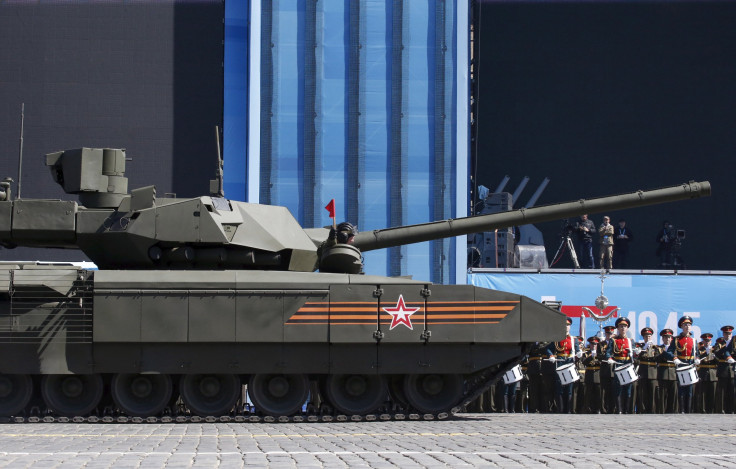Russian Armata Tank, Kurganets-25 Armored Vehicle To Start Field Trials In 2016

The Russian military's prized Armata platform, the base for a new tank and armored infantry fighting vehicle, is on schedule to start operational trials in 2016, said Oleg Salyukov, the commander in chief of the Russian army, according to state-owned news service Tass Monday. A smaller infantry fighting vehicle and a new personnel carrier will start trials next year as well.
"The development of the advanced armored vehicles, such as the Armata-based tank and IFV, Kurganets-25 IFV and Bumerang APC, are on schedule," Salyukov said, according to Tass. "The efforts are planned for completion in 2016 along with the official trials."
The T-14 Armata tank debuted to fanfare and heavy expectations at the Victory Day Parade in Moscow in May after mock-ups first surfaced in 2013. It had previously been shrouded in secrecy. While the Armata has been regularly touted, one tank appeared to break down during the parade, an issue that was quickly resolved.

The tank is expected to feature a number of technological advances. It reportedly will have unmanned turrets, digital controls that have been likened to playing a video game and heavily armored crew areas. The increased focus on automation will reportedly mean fewer soldiers will be needed to operate the vehicle. Designers also say it will feature technology that will hide the tank from radar.
The tank is also equipped with a 125-millimeter gun with the ability to be upgraded to a 152-millimeter in the future. Deputy Prime Minister Dmitry Rogozin has previously said an Armata shell could burn through armor a meter thick, Tass reported.
Russia plans to roll out some 2,300 tanks by 2020 as a part of a massive military modernization pushed by President Vladimir Putin. Russia is expected to spend about $400 billion to upgrade its military. It has long been suggested that it would complete testing in 2016. Production of the tanks would then come in 2017 or 2018.
© Copyright IBTimes 2024. All rights reserved.












